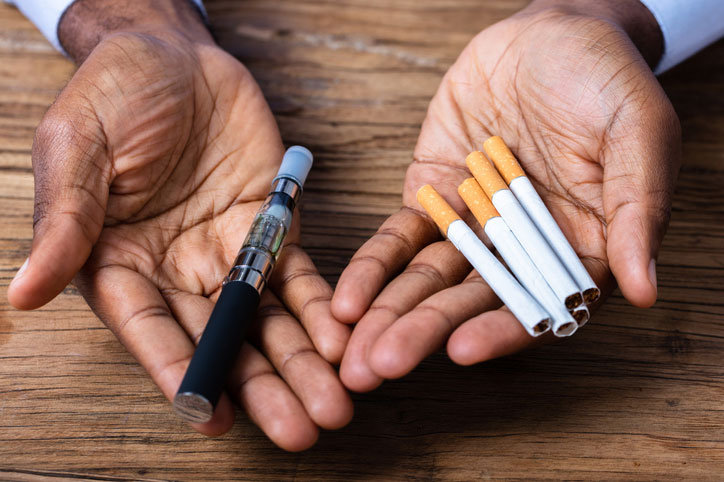As smoking habits evolve and health awareness grows, many smokers are exploring alternatives to traditional tobacco products. One of the most popular replacements is vaping, which includes using devices like the Randm Tornado, a popular disposable vape. But the key question remains: Are vapes better than cigarettes? Are they really safer, or is this just a new form of risk?
This article explores the science, benefits, risks, and social implications of vaping versus smoking to help you make an informed decision.
Understanding the Basics: What Are Cigarettes and Vapes?
Cigarettes are made from dried tobacco leaves and contain thousands of chemicals, including tar, ammonia, carbon monoxide, and nicotine. They are burned and inhaled, producing smoke that delivers nicotine but also harmful byproducts.
Vapes, or e-cigarettes, are battery-powered devices that heat a liquid (commonly called e-liquid or vape juice) into a vapor that the user inhales. These liquids typically contain nicotine, flavorings, and base liquids like propylene glycol and vegetable glycerin.
Popular vape models like the Randm Tornado come pre-filled with flavored liquid and are ready to use out of the box, making them convenient and widely used.
Vaping vs. Smoking: What’s the Health Risk?
1. Chemical Exposure
- Cigarettes release over 7,000 chemicals when burned, many of which are known carcinogens.
- Vapes, on the other hand, contain significantly fewer chemicals. According to Public Health England, vaping is at least 95% less harmful than smoking.
However, “less harmful” does not mean “harmless.” Vape aerosols can contain formaldehyde, acrolein, and diacetyl—chemicals linked to lung disease. Devices like the Randm Tornado, while cleaner than cigarettes, still deliver nicotine and trace chemicals.
2. Nicotine Addiction
Both cigarettes and vapes commonly contain nicotine, the addictive substance that makes quitting difficult. However:
- Cigarettes deliver nicotine rapidly and with high efficiency.
- Vapes allow users to control the nicotine dosage, and many people use lower doses or even nicotine-free options.
While vapes may offer a way to reduce nicotine intake over time, they can also lead to addiction if misused, especially among teens and young adults.
Vaping as a Smoking Cessation Tool
Several studies and health bodies, including the UK National Health Service (NHS), support vaping as a smoking cessation aid. Users who switch from smoking to vaping can gradually taper off nicotine or eliminate smoking-related harms.
Devices like the Randm Tornado, which offer high puff counts and smooth nicotine delivery, are often used by former smokers to replace cigarettes. Still, vaping should ideally be a short-term solution, not a lifelong habit.
The Rise of Disposable Vapes: A Focus on Randm Tornado
Disposable vapes like the Randm Tornado have surged in popularity. With colorful designs, fruity flavors, and ease of use, they’re especially attractive to young users.
Pros of Randm Tornado and similar devices:
- No refilling or recharging required
- Flavors that make quitting cigarettes easier
- Controlled nicotine levels
- Portable and discreet
Cons:
- Environmental concerns due to disposables
- Can appeal to non-smokers and teens
- Some users may end up vaping more frequently
The Randm Tornado offers a convenient entry into vaping but should still be used with caution, especially among non-smokers.
Social and Psychological Aspects
Smoking
- Has long been linked to adult culture, stress relief, and social bonding.
- Carries a heavy stigma today due to health risks and secondhand smoke.
Vaping
- Considered more socially acceptable, especially indoors.
- Seen as a “modern” alternative, especially with sleek devices like Randm Tornado.
- Flavored vape juices appeal to younger demographics, which raises concern about early addiction.
Despite the improved perception of vaping, it’s crucial to maintain awareness about its potential risks.
Environmental Impact
While vaping reduces cigarette butt litter and smoke pollution, it introduces new challenges:
- Disposable vapes like the Randm Tornado are not easily recyclable.
- Batteries and plastics can harm ecosystems if not disposed of correctly.
Manufacturers are starting to explore eco-friendly alternatives, but the current model still raises environmental concerns.
Regulatory Landscape
Different countries view vaping through varying lenses:
- The UK encourages vaping as a way to quit smoking.
- The U.S. FDA is cracking down on flavored vapes to reduce teen usage.
- Countries like India have banned vaping altogether.
Devices like the Randm Tornado, especially with sweet flavors and appealing packaging, are under scrutiny to ensure they don’t attract non-smokers or youth.
Is Vaping Safer Than Smoking?
Let’s summarize the key comparisons:
| Feature | Cigarettes | Vapes (e.g., Randm Tornado) |
| Chemicals | 7,000+ (many toxic) | Significantly fewer |
| Cancer Risk | Very High | Lower, but not zero |
| Nicotine Control | No | Yes |
| Smell & Residue | Persistent | Minimal |
| Secondhand Exposure | Harmful | Less harmful |
| Cessation Aid | No | Yes |
| Teen Use Concern | Moderate | High |
From a harm-reduction standpoint, vaping is clearly safer than smoking. But it’s important to remember: safer doesn’t mean safe.
Final Verdict: Should You Switch?
If you’re a current smoker, switching to a vape like the Randm Tornado may be a smart step towards reducing harm. Many ex-smokers have found success quitting cigarettes entirely through vaping.
However, if you don’t smoke, there is no health benefit to picking up vaping. Starting with flavored disposable vapes can create a new addiction, not prevent one.
Bottom Line:
Vaping is better than smoking, but neither is risk-free.
Use it as a tool—not a trend.
Frequently Asked Questions
Is Randm Tornado safe?
Randm Tornado is safer than cigarettes but not entirely risk-free. It still contains nicotine and other chemicals that may impact your health.
Can vaping help you quit smoking?
Yes, many people successfully use vaping to transition away from cigarettes. Gradually reducing nicotine levels can support quitting altogether.
Are vape flavors dangerous?
Some flavorings have been linked to lung issues when inhaled. While not all are harmful, caution is advised—especially with unknown brands or unregulated products.

